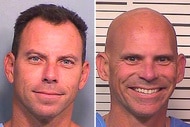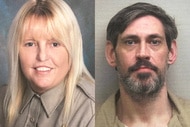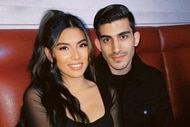Create a free profile to get unlimited access to exclusive videos, breaking news, sweepstakes, and more!
New Details Emerge In The Murder Trial Of College Student Who Got Into The Wrong Car, Thinking It Was Her Uber
Prosecutors provided chilling new details in the death of Samantha Josephson, who had been out celebrating her impending college graduation, when she disappeared after mistakenly getting into a car she believed was her Uber.

Samantha Josephson had just finished a night celebrating her impending college graduation when she made one fatal mistake.
The South Carolina student mistakenly got into the back seat of Nathaniel Rowland's Black Impala, believing it was her Uber driver. She was never able to get back out—due to the child locks already in place, according to prosecutor Bryon Gipson’s opening statement Tuesday in the trial against Rowland.
Gipson told jurors Rowland stabbed Josephson more than a 100 times “throughout her feet, throughout her torso, throughout her face, her neck, her hands” before leaving her body in the Clarendon County woods not far from where he had grown up, according to The State.
“It’s those intentional deliberate, heinous, cruel and malicious acts that Nathaniel David Rowland has been indicted for kidnapping Samantha Josephson. He’s been indicted for murdering…Samantha Josephson,” Gipson said, according to People, adding that the 27-year-old is also facing possession of a weapon charges during the commission of a violent crime.
Josephson’s case made national headlines after ominous security footage from a popular entertainment district in Five Points showed her getting into the black vehicle as she ended her night in the early morning hours of March 29, 2019.
Gipson provided new details in the chilling case on Tuesday as he began to present the state’s case against Rowland, who prosecutors have alleged had been driving the black 2017 Impala and circling the block before picking up the University of South Carolina student.
Investigators were able to track Josephson’s movements after she left the area through a social media tracking app she had shared with a friend. It showed the 21-year-old moving away from the nightclub district through neighborhoods in the opposite direction of her apartment.
Gipson has alleged that investigators were also able to track data from Rowland’s cell phone to show that the two phones “tracked together” for a period of time before Josephson’s phone cut off, the local newspaper reports. Data from Rowland’s phone allegedly showed him continuing to travel to a rural area in New Zion, two miles from his childhood home, prosecutors said.
Josephson’s body was discovered there 14 hours later by turkey hunters, local station WIS reports.
Gipson said jurors would also hear evidence showing that someone had made nine unsuccessful attempts to use Josephson’s Wells Fargo card after her death and that Rowland had allegedly tried to sell her cell phone.
Josephson’s DNA and fingerprints were also found in Rowland’s car and an expert is expected to testify that a “knife-bladed tool” connected to Rowland appeared to match cuts made to her body, the local paper reports.
However, Richland County public defender Alicia Goode insisted her client was innocent and urged jurors not to draw any conclusions until they had heard the evidence in the case.
“There is zero evidence that Nathaniel Rowland is the one who kidnapped and killed Samantha Josephson,” she said, according to the local paper.
Goode emphasized that none of Rowland’s DNA was found on Josephson’s clothes or body—yet DNA from others had been present.
“Nathaniel’s DNA is not there but someone’s else’s is…multiple someones,” she said.
Goode said the defense would not “blame the victim” and did not plan to say one bad thing about Josephson, but they contend that Rowland had not been the one to kill her.
After the attorneys made their opening remarks, the initial testimony got underway.
Josephson’s boyfriend of two years, Greg Corbishley, took the stand to tell jurors he had spoken to Josephson throughout the night she disappeared from his home in Charleston and had been tracking her on her phone to make sure she arrived safely, local station WIS reports. When it stopped in Rosewood, he assumed she had left the phone in the Uber and went to bed.
When he learned she was missing, he drove to Columbia to help search for her before police came to notify him later that day that she had been found dead. He blacked out, he recalled.
The actual Uber driver who had been scheduled to pick Josephson up from the location also took the stand, describing how he had arrived at the agreed upon location and didn’t see the college student. The driver told jurors he drove around for several minutes before canceling the order and continuing on with his night.
The driver said he voluntarily provided a DNA sample and spoke with investigators after the 21-year-old had been reported missing.
The trial is expected to continue Wednesday.






















